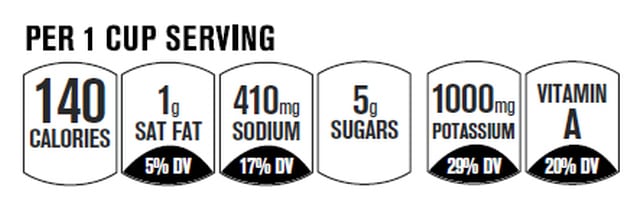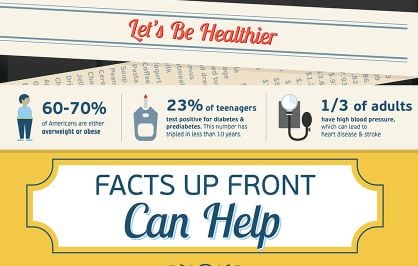Its comments came as The Grocery Manufacturers Association (GMA) and the Food Marketing Institute (FMI) unveiled a national consumer education campaign to raise awareness of Facts Up Front.
CSPI executive director Michael F. Jacobson said that the Institute of Medicine called on the FDA to design a mandatory, system that would instantly communicate whether a food is a healthier choice in its 2011 report on front-of-pack nutrition rating systems.
But “the industry's voluntary ‘Facts Up Front’ is not such a system,” claimed Dr Jacobson.
“It is aimed more at pre-empting an FDA-designed system than at providing easy-to-understand ‘nutrition in a nutshell’ information for consumers. Its voluntary nature means you may not see it on junk foods. And even if you did, it wouldn't successfully highlight the food's unhealthfulness.
“Facts Up Front is a joke that should be roundly ignored by the FDA and the Administration. We need an FDA-designed front-of-package system that is mandatory, easily understood by even less-educated consumers, and science-based.”
Echoing his comments in her Food Politics blog, Dr Marion Nestle, Paulette Goddard professor of nutrition, food studies, and public health at New York University, said: "The IOM recommended that front-of-package labels be: Simple: easy to understand; Interpretive: putting judgments in context; Scaled: indicating good, better, and best.
"Facts Up Front does none of the above. Facts Up Front is a tool for selling, not buying."
GMA: 9 out of 10 grocery shoppers find Facts up Front easy to use
However, GMA president and CEO Pamela G. Bailey said that according to a recent online survey by Harris Poll on behalf of GMA, “more than nine in 10 grocery shopping decision makers agree that Facts Up Front makes nutrition information easy to find and use (93%), and that it is simple to understand (92%)”.
The new ads promoting Facts up Front “will reach more consumers to build awareness of the label and help enhance their nutrition knowledge and ability to use Facts Up Front most effectively”, said the GMA.
"The campaign also includes an online toolkit to help retailers communicate Facts Up Front in stores."
FDA: Monitoring voluntary approaches
Asked by FoodNavigator-USA whether the FDA is planning to propose a uniform scheme that should apply to all products under its jurisdiction, or whether it is currently just monitoring voluntary approaches such as Facts up Front, an FDA spokesman said: “It’s the latter.”
GMA: All of the research we’ve seen indicates that consumers don’t want to be told what to do
Facts Up Front icons - which highlight calories, saturated fat, sodium and sugar per serving plus two (optional) ‘nutrients to encourage’ - are being rolled out across all GMA and Food Marketing Institute (FMI) member products - representing almost 80% of packaged foods in retail.

They do not - unlike some competing front-of-pack labels - attempt to guide shoppers towards ‘healthier’ products or rank foods as good, bad or ugly, but instead highlight key data from the Nutrition Facts panel to help consumers make informed choices, EVP Sean McBride told FoodNavigator-USA last April.
“All of the research we’ve seen indicates that consumers don’t want to be told what to do. They want a facts-based scheme, not an interpretive one, because everyone has different priorities.”
Controversy

While Facts Up Front has been welcomed by many stakeholders, it has not been met with universal approval, however, with some critics calling for a more ‘interpretive’ scheme that alerts busy shoppers to healthier products via stars, icons or colors.
And while the resources section of Facts Up Front website cites a 2010 Institute of Medicine (IOM) report praising some aspects of the industry-backed scheme, it neglects to mention that the IOM’s final report (published in 2011) recommended a different approach.
The IOM concluded: “It is time for a move away from front-of-package systems that mostly provide nutrition information on foods or beverages but don’t give clear guidance about their healthfulness, and toward one that encourages healthier choices through simplicity, visual clarity, and the ability to convey meaning without written information.”
The IOM’s favored scheme instead ascribes a rating of zero, one, two or three points (or ticks) to any given product depending on whether certain thresholds are met for saturated and trans-fatty acids, sodium and added sugars.
Are the alternatives any better?

As the IOM itself recognizes, however, no FOP scheme is perfect, with simpler schemes often oversimplifying the science, and more complex schemes baffling consumers.
For example, while color-based approaches might appear more consumer-friendly, they have also been criticized for failing to take portion sizes into account or basing their criteria purely on negatives (fat, salt, sugar) rather than positives (fiber, vitamins).
(So diet cola gets a green light because it has no salt, fat or sugar, while cheese gets a red light owing to its fat and sodium content, despite the fact that it also contains beneficial nutrients.)
Click here for more information on Facts up Front.
